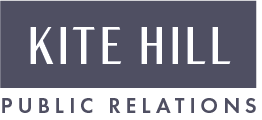Has it really been 10 years? Toby Daniels, founder of Social Media Week, began the 2018 event with a walk down memory lane. Momentous changes have occurred in the social realm in the decade since Daniels ran his inaugural Social Media Week, from the rise of Instagram to peak over-share in 2012, the ice bucket challenge in 2014 through to the emergence of the social influencer, the point at which, in Daniels’ words, “A niche internet trend becomes one of those most influential mediums in the world.” Given the amount of youngsters these days who have never, and will never watch traditional television, that seems pretty accurate.
But Daniels also noted that, “Our collective outlook on the relationship between humanity and technology was much more simplistic and much more positive in 2009.” SMW revealed stats this week showing that nearly half of US adults have proactively blocked or unfriended someone because that person’s worldview conflicted with their own, creating rifts amongst communities and a growing social divide. Alongside this, 48% of adults say social media and tech have had a negative impact on democracy. It really does feel like an awful long time has passed since those wide-eyes optimistic days of social media’s infancy.
Many of us bear witness daily to this growing negativity within our social feeds as arguments are played out with a bluntness or lack of respect that would never occur within the physical domain. And yet conversely, even the most begrudging of social media users would be forced to admit to smiling after seeing friend after friend – punctuated by the occasional celebrity - soaking themselves to the bone in the aid of ALS cause that, prior to the ice bucket challenge, most of us had never even heard of.
Daniels’ point about marketing felt particularly prescient. “Social media was supposed to facilitate two way conversations between marketers and their audiences.” Yes it was, but to what extent is this truly happening today, particularly in a world where everyone – brand, individual, community – seems to prioritise broadcasting over listening and engaging?
There’s a lesson here for the world of PR and communications. We speak to the media every single day, we run our clients’ social feeds and represent the brands to their customers, we speak to dozens and dozens of fast-growing businesses every month. If we are to play our own small part in bringing this fragmented world closer together, then we must break with the "pitch first, listen later" attitude that still makes people sceptical of PR people, and we must build closer, reciprocal relationships with everyone in our professional lives.

